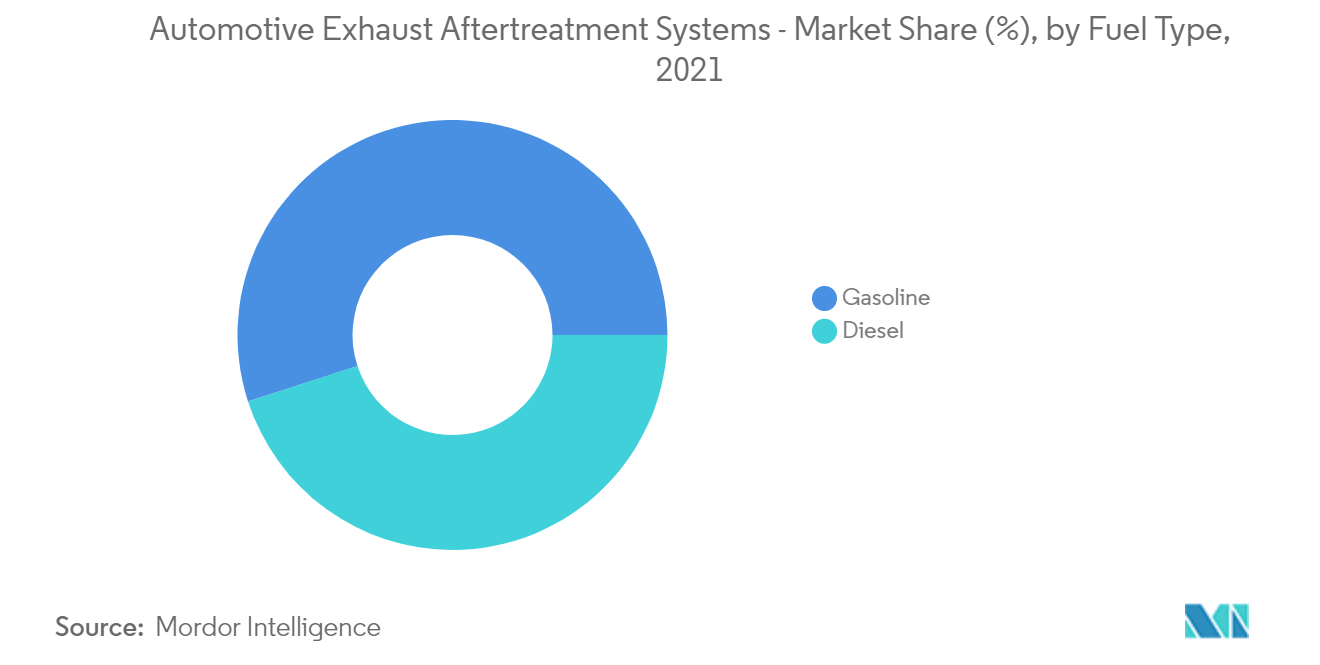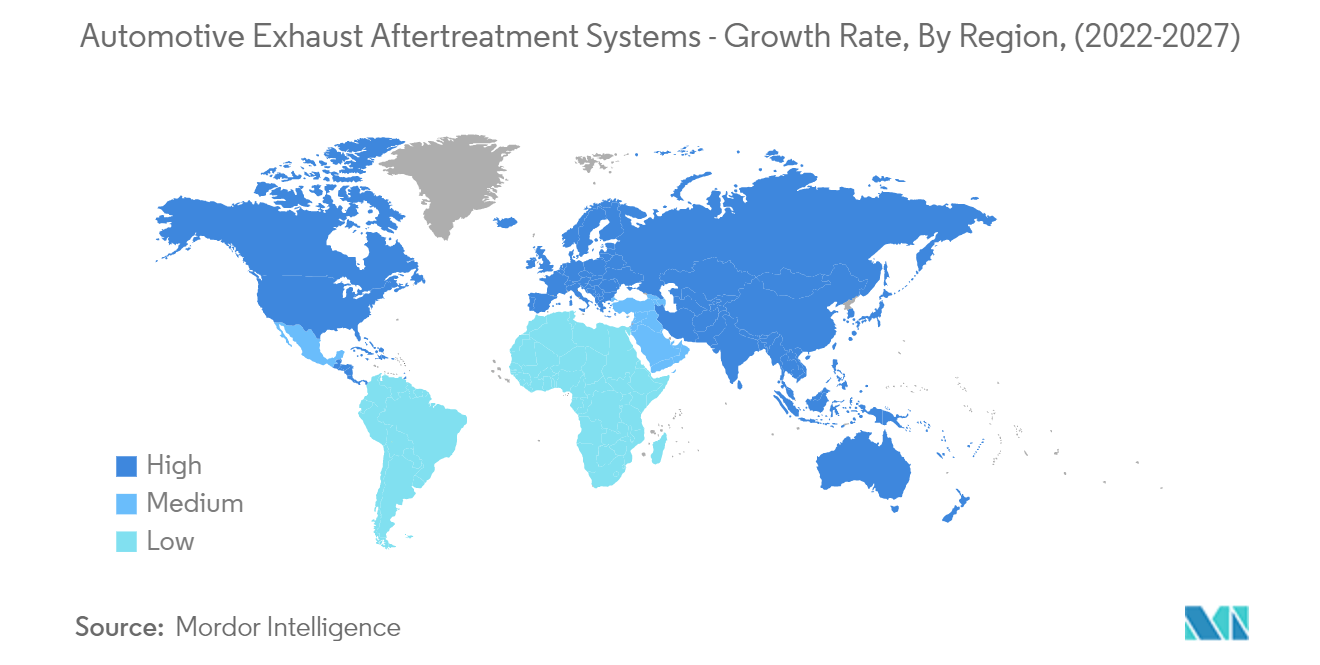Market Trends of Automotive Exhaust Aftertreatment Systems Industry
This section covers the major market trends shaping the Automotive Exhaust Aftertreatment Systems Market according to our research experts:
Stringent Emission Regulations Driving the Market
The demand for diesel engines is expected to witness positive growth due to the surge in commercial vehicle sales, owing to the growing construction industry and developing logistics market (primarily due to a rise in the e-commerce business).
Emission standards for diesel engines are becoming more stringent gradually. Adhering to such standards has forced manufacturers to develop advanced exhaust after-treatment systems.
For instance, the Government of India announced to skip BS-V and leapfrog to BS-VI emission norms in April 2020, opening new opportunities for the exhaust after-treatment systems market. Strong economic growth in Asia-Pacific increased the purchasing power of consumers in the region.
The majority of diesel engines can convert between 40% to 46% of the fuel to propulsion energy, while the remaining is lost in the environment as heat through exhaust emissions and cooling systems.
With the enactment of Euro VI emission for heavy-duty engines, the burden on commercial vehicle manufacturers has increased. Manufacturers are looking at the most efficient type of filter that can be installed in the exhaust aftertreatment systems for diesel vehicles, with an aim to provide least or zero particulate emissions and meet the emission standards set by different governments.

Asia-Pacific Market Growing at a Faster Pace
In 2021, Asia-Pacific dominated the global market. China emerged as the largest automotive destination, with major OEMs setting up manufacturing plants in the country. The government is playing a pivotal role in the shift toward electric vehicles. To cut carbon emissions and reduce dependence on non-renewable sources, governments of various countries have implemented programs to boost the electric vehicle infrastructure. They are supporting manufacturers with funds to set up new factories and to encourage customers to purchase. Despite many efforts, the need for diesel-powered vehicles is especially observed in commercial vehicles used for mass transport or mining purposes.
China is the world's largest automotive market, accounting for more than 35% of the global passenger vehicle sales and 15% of the global commercial market sales. With numerous active vehicles in the country, the government is coming up with various strategies to reduce emissions. For instance,
China targets a reduction of 50% for hydrocarbons, 40% for nitrogen oxides (NOx), and 33% for particulate matter in terms of the China 6 emission standards. New gasoline vehicles in China are made mandatory to meet the regulations. For instance, from January 2021, China 5 emission standard vehicles are not permitted for sales due to the oncoming of China 6 standards.
India also introduced strict emission standards, due to which the aftertreatment systems market is expected to grow in the country. The huge market for the automobile industry in the country is an added advantage.
With such stringent emission standards in the region, the market for exhaust aftertreatment systems is looking at a good growth potential in the coming years up to the forecast period.

